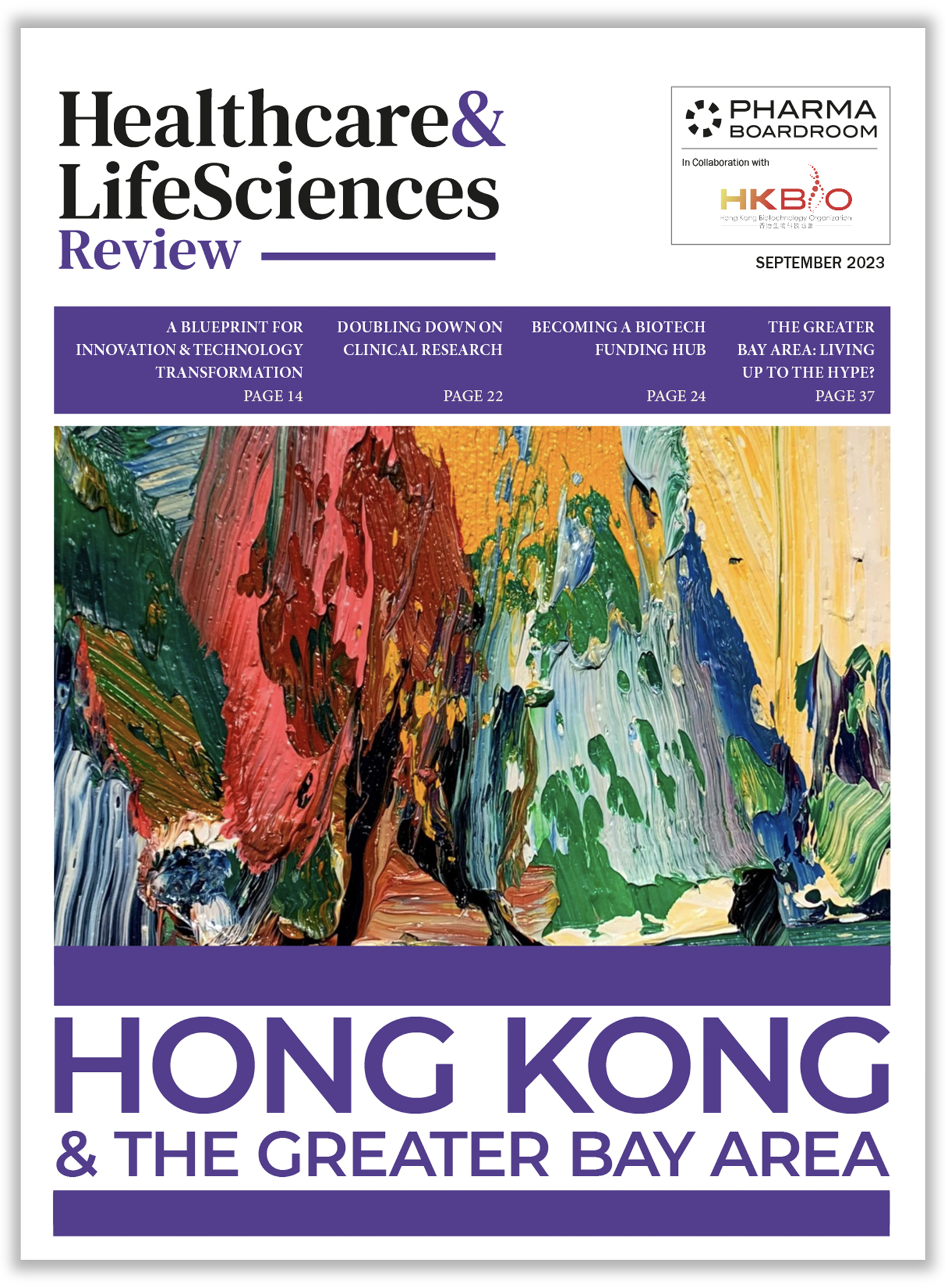Speaking to PharmaBoardroom in the context of our upcoming InFocus special report on HIV, Access to Medicine Foundation CEO Jayasree Iyer looks back on pharma's successes and failures in access to HIV treatment and prevention. Iyer highlights the impact of voluntary licensing of drugs via the Medicines Patent Pool and well-organised global activism among the HIV community; the worrying trend of decreasing investments in infectious disease R&D; and the lessons that can be taken from the HIV access experience and applied to other disease areas.
The Access to Medicine Foundation’s reporting highlights both the successes and failures of global pharma in fostering access to their medicines, with HIV-engaged players expanding access to key products, as highlighted in your recent report. What has pharma done well in terms of HIV prevention and treatment access, and where could improvements be made?
What pharma has done well is the development of several effective products for both the prevention and treatment of HIV. The success stems both from the multinational companies that develop these products initially and the generic companies that then license them. Dolutegravir (DTG), an antiretroviral, is just one example of a drug that has had a massive impact, and the overall spectrum of HIV treatments that have been developed is fairly comprehensive.
However, historically and today, ensuring equitable global access to these products has been a major issue. Thanks to a lot of global activism, the access picture is now much rosier than it was 20 years ago, but there is still significant room for improvement. Voluntary licensing via the Medicines Patent Pool (MPP) has proven highly effective in bridging global access gaps, and most – but not all – of the HIV products on the market are being made available through this mechanism. However, we are still missing some key preventative treatments, such as long-acting Cabotegravir, from such schemes.
Additionally, we are seeing fewer and fewer pharma companies choosing to invest in infectious disease R&D, which poses questions about the future of the field.
HIV seems to be a frontier for new models of bringing treatments to patients. Is this a result of activism or the nature of the disease itself?
The combination of available drugs and the vocal activism which highlighted the stark inequities in access led to HIV becoming a poster child for global health systems. Treatments for malaria, tuberculosis, and many vaccines have benefited from the groundwork laid by HIV treatments. This prominence also meant significant investment from multiple donors and substantial country-level commitments. However, HIV today must compete for resources with many other diseases and our work on HIV care and access is far from complete.
An immediate and effective response driven by activism was a unique aspect of the early decades of the HIV pandemic. However, diseases like sickle cell anaemia and various cancers have great treatments available but lack the level of global activism – especially from low- and middle-income countries (LMICs) and from marginalised groups like the LGBTQ+ community – demanding access to them, as was the case for HIV.
Does pharma’s decreasing level of investment into infectious disease R&D worry you?
Yes, it’s definitely a worrying trend, especially for emerging infections and the potential for future epidemics and pandemics. This year is particularly important for addressing drug-resistant infections, which will be discussed at a high-level meeting at the UN General Assembly.
The industry tends to shy away from investing in infectious disease research because it is costly and less lucrative compared to diseases affecting high-income populations. Oncology has become a new frontier, followed by even more niche diseases, driven by the potential for high pricing due to the complexity and specialized nature of treatments required. This trend is not just a matter of scientific direction but also a reflection of the pharmaceutical industry’s strategic choices to seek the next blockbuster.
There’s a shift away from diseases like HIV, which affects a vast number of patients who may not have the financial means to afford expensive treatments. The focus is now on specialized treatments for very specific populations. This shift is concerning because it overlooks the ongoing need for broad-based and accessible healthcare solutions.
Additionally, it is not only Big Pharma that is stepping away from infectious disease research. Biotechs are also investing less in the field, which could have serious repercussions for global health resilience.
Aside from voluntary licensing, are there other impactful mechanisms to bring HIV prevention and treatment to markets that companies might not otherwise be present in?
Direct licensing with manufacturers has been another approach, used by companies like Gilead for hepatitis treatments. This method involves both voluntary and direct licenses and has been effective in reaching a broad patient base globally.
For tuberculosis care, Johnson & Johnson employed a similar approach with bedaquiline, offering licenses to several firms. This strategy not only broadens the drug’s reach but also mitigates risks associated with reliance on a single manufacturer, which can be vulnerable to shifts in pricing or production strategies. In terms of equity, having multiple manufacturers helps maintain price stability and ensures a robust supply chain. However, unlike HIV, oncology lacks a global procurement agency, which complicates the distribution and affordability of cancer treatments worldwide.
Additionally, post-COVID, Sub-Saharan Africa is increasingly looking towards building their own essential medicine manufacturing capabilities to reduce reliance on exports. The African Medicines Agency as well as individual countries in the African Union are looking to work with the MPP and others on non-exclusive voluntary licenses for innovative drugs as well as bilateral licenses for off-patent drugs.
It will take time to establish manufacturing capabilities in Africa, but initiatives like those by USAID, which partners with manufacturers on diagnostics, show progress. We’re also seeing advances in technology transfer agreements, which will be further detailed in our upcoming 2024 Access to Medicine Index.
There has been a lot of recent discussion around ESG goals within the pharma industry, but how do you feel these goals should evolve to better address the access piece?
ESG goals are indeed broad, covering diversity, climate, governance, and social issues. However, health needs to be a more prominent component, particularly in the pharma industry. It’s about ensuring that initiatives aren’t just one-off actions but are integrated across all operations. If a company is committed to healthcare, it should ensure its products are accessible not just in high-income countries but also in low-income regions, where 80% of the world’s population lives. Addressing health access under ESG goals can significantly enhance a company’s impact on global health.
What impact has non-exclusive voluntary licensing had on access to HIV prevention and treatment in LMICs since the establishment of the Medicines Patent Pool back in 2010?
The MPP has been pivotal in facilitating negotiations between original patent holders and generic manufacturers to expand access to several new treatments. This model has increased the number of countries that can access medications under more favourable terms than bilateral agreements typically allow. The non-exclusive nature of these agreements, combined with the ability to procure necessary active ingredients, addresses several logistical barriers. Essentially, the MPP’s approach serves the public interest by ensuring that essential medicines reach those who need them most, exemplified by its success in expanding access to HIV and hepatitis treatments. Hopefully in the next few years they can also crack the code on expanding access to more cancer drugs.
Why do you think there is more willingness within the industry to negotiate on HIV drugs compared to cancer treatments?
The response to HIV was significantly shaped by intense activism, which isn’t as prevalent for cancer. The market dynamics also differ; the potential patient base for HIV treatments under voluntary licensing is much larger compared to cancer drugs. Additionally, the investment in infrastructure and global procurement systems like the Global Fund, which are well-established for HIV, are not as developed for cancer. Without similar support structures, companies are hesitant to engage in voluntary licensing for cancer treatments, as they don’t see a comparable return on investment or patient reach.
AIDS alleviation efforts are becoming increasingly politicised with anti-homosexuality laws in countries like Uganda and Ghana stopping people from accessing lifesaving health services and seriously impeding progress on eliminating HIV. From an access to medicine perspective, how dangerous is this trend?
These laws are extremely inhibitory to access because they inhibit people’s freedom and rights to be who they are. These laws stigmatise HIV and discourage people from accessing diagnosis, treatment and support in the usual way, thereby opening up alternative channels where falsified and poor-quality medicines and sham treatments are more prevalent. In the worst-case scenario, patients might not access any treatment and lose their lives.
There is a significant risk of taking a major step backwards from all the progress we have made in HIV if this is allowed to happen. This is why it is important for us to tell the success story of HIV care and its impact on global health and equality, for all people regardless of their sexual orientation. Communities need to once more be allowed to speak up on this.
We’ve seen some interesting trends in Africa, such as the potential launch of the African Medicines Agency later this year. How do you assess the ability of regulatory bodies in low- and middle-income countries to work together or to upskill in order to bring medicines to patients more quickly?
Historically, most countries have based their drug registration and approval processes on those already established in the US or Europe. This dependency helps in ensuring strong quality assurance and scrutiny of the effectiveness of new treatments, but inherently creates a gap in equity as low-and middle-income countries often face long waits for new medicines. An African Medicines Agency working in tandem with the FDA and EMA could enable concurrent approvals, significantly bridging this equity gap. For example, South Africa, Nigeria, Ghana have refreshed their regulatory system to expedite approvals, which has greatly improved access within these regions. This agency could streamline not only the initial registration and approval processes but also enhance quality, surveillance capabilities and even data pooling and coordinated procurement efforts, particularly benefiting smaller markets with limited buying power or healthcare infrastructure.
Since 2001, the WHO prequalification programme has worked to facilitate access to medicines, vaccines, and other health products – including in HIV – especially in low-resource settings, by prequalifying products that meet specified criteria set by the WHO. What impact has this had?
The pre-qualification process is essential for global procurement, especially in settings where the Global Fund and similar entities only purchase WHO-prequalified products. However, this process can be costly and requires substantial investment from manufacturers. An assurance of purchase is crucial to incentivize manufacturers, particularly smaller or regional ones, to pursue pre-qualification, but in order to get assurance, these manufacturers should be prequalified, so it’s a cycle. Voluntary licensing also plays a role here, reminiscent of the HIV treatment model where most licensees were Indian companies known for their production capacity and whohave invested in the quality of HIV products in order to sell into these systems.
What message would you like to send to pharmaceutical companies about HIV and what you hope to see in this field over the next five years?
My first main message is to maintain a high level of investment in HIV prevention and treatment. Many companies have shifted away from infectious disease research, which is concerning. We can’t afford to have companies withdraw from infectious disease research—it’s crucial for global health security.
I would also like to see the successes we’ve achieved in HIV care leveraged across broader pharmaceutical portfolios. This is essential not just for financial reasons but also for the development and commercialization of treatments and for investing in health systems more broadly.







